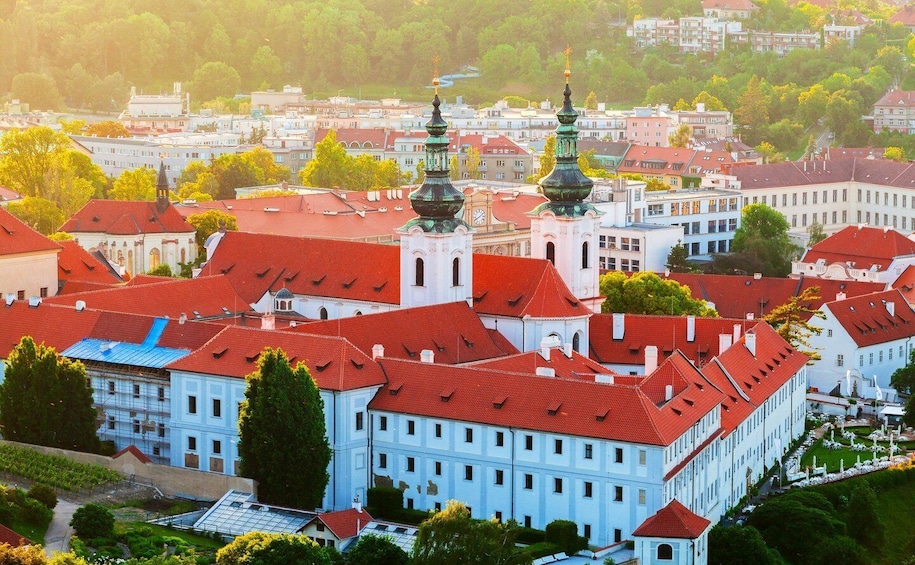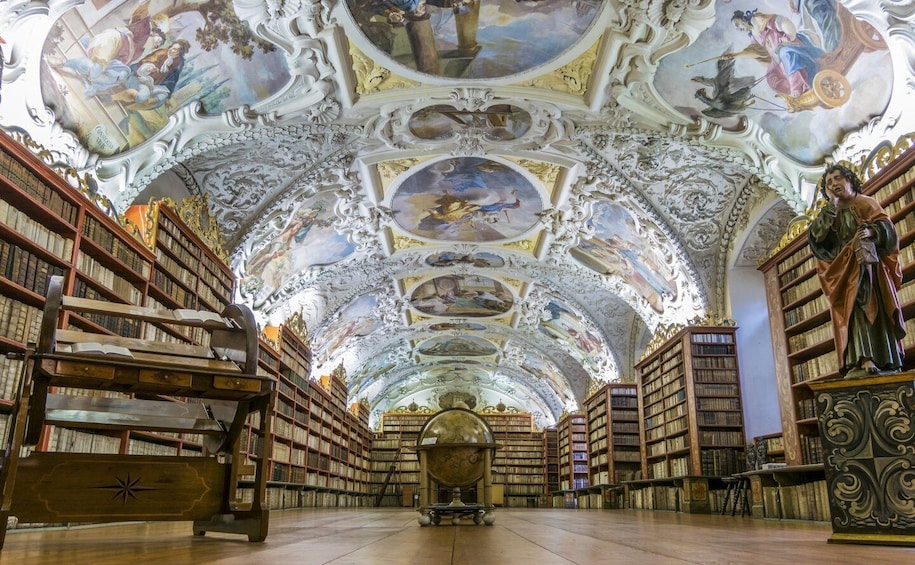Bergabunglah dengan RosoTravel dalam tur berpemandu ke Biara Strahov yang megah dan Perpustakaan Ordo Kanonik Reguler Prémontré di Hradcany, Praha. Pelajari tentang sejarahnya yang penuh gejolak dan bagaimana ia bertahan dari berbagai konflik agama selama berabad-abad, termasuk 2 perang dunia dan rezim komunis. Temukan harta karun dari salah satu tempat ibadah terpenting di Praha!
Pesan tur pribadi selama 3 jam ke Biara dan Perpustakaan Strahov, harta karun warisan budaya dan spiritual Praha. Pemandu Pribadi Berlisensi Anda akan membawa Anda dalam perjalanan yang menarik melalui distrik Hradčany, dimulai dari Hradčany Square yang elegan, dikelilingi oleh arsitektur Barok yang bersejarah. Anda akan melewati kompleks Kastil Praha yang ikonik dan situs ziarah Loreto yang menakjubkan.
Di Biara Strahov, akses tanpa antrean memungkinkan Anda untuk membenamkan diri dalam interiornya yang luar biasa tanpa penundaan. Jelajahi Perpustakaan Strahov yang terkenal di dunia, rumah bagi Aula Teologi dan Filosofi, yang terkenal dengan langit-langit berukir dan hiasan kayunya. Pemandu Anda akan menjelaskan sejarah perpustakaan ini, mulai dari koleksi manuskripnya yang sangat banyak hingga perannya yang sangat penting dalam melestarikan pengetahuan selama berabad-abad.
Tur ini juga mencakup kunjungan ke Galeri Strahov, yang menampilkan karya seni religius yang indah dari periode Gotik, Renaisans, dan Barok. Kagumi patung, lukisan, dan karya langka yang mencerminkan evolusi artistik dan spiritual Praha. Kemudian, masuklah ke dalam Basilika Maria Diangkat ke Surga, mahakarya Barok dengan lukisan dinding yang rumit dan altar yang tenang yang menyoroti keindahan sakral biara.
Dengan Pemandu Pribadi yang menyesuaikan tur dengan minat Anda, ini adalah kesempatan Anda untuk merasakan kekayaan sejarah dan budaya Praha dengan detail yang tak tertandingi. Pesan sekarang dan masuklah ke dunia Biara Strahov yang mempesona!




